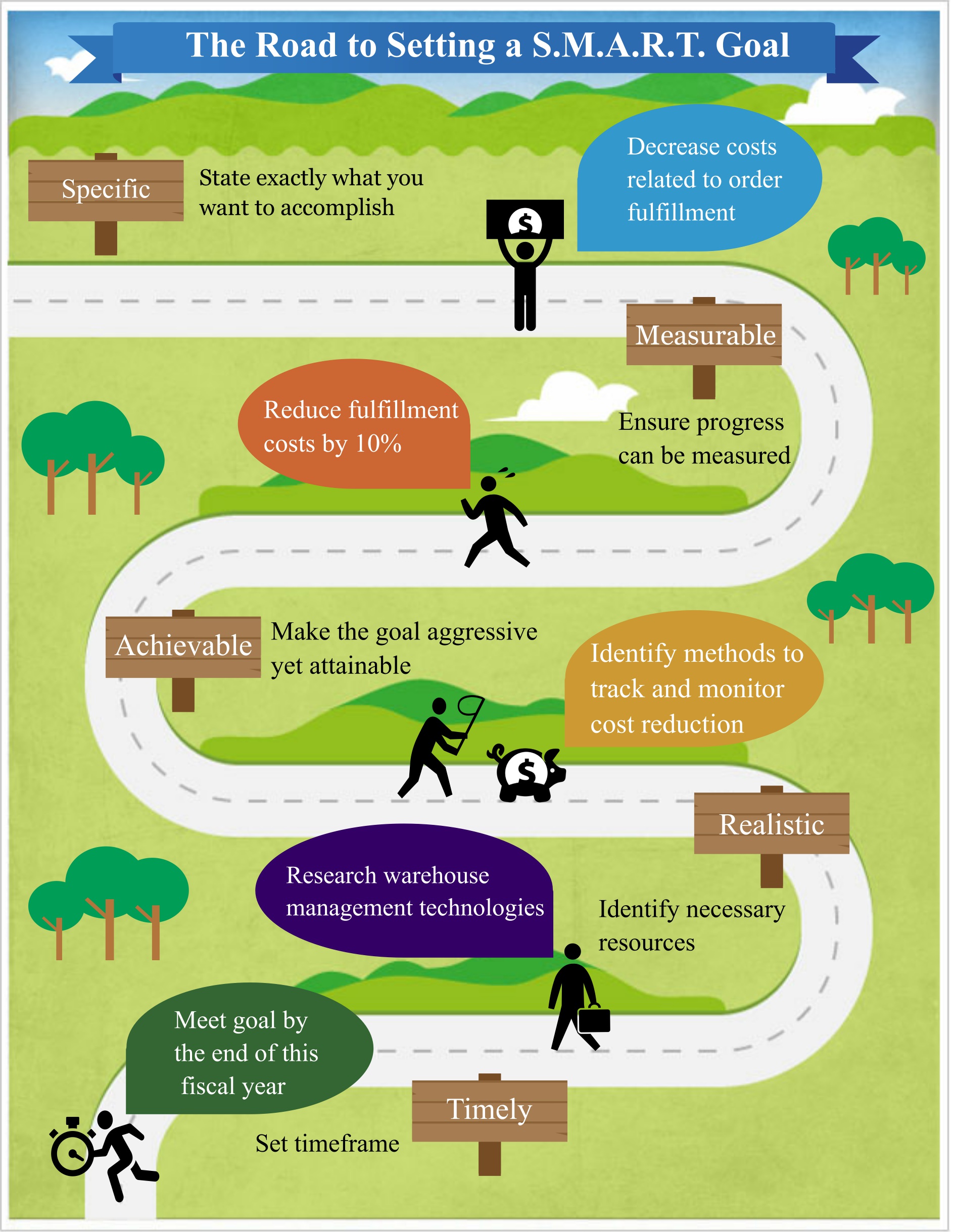
by Fronetics | Jan 5, 2016 | Blog, Leadership, Strategy, Supply Chain

Fronetics Strategic Advisors is a leading management consulting firm. We work with organizations to identify and execute strategies for growth and value creation.
Good leadership is invaluable. At Fronetics we offer: leadership solutions for organizations during times of transition; leadership development solutions; thought leadership on important news and trends; talent acquisition and succession management guidance and support; and M&A support to help our clients build and capture value.
Two of the most-read leadership articles of 2015 were interviews with top female supply chain executives. Interviewing these women, Arrow Electronics’ Cathy Morris and Bravo Solutions’ Mickey North Rizza, was a highlight for me. Thank you again to both women for taking the time to talk with me and to share your thoughts on leadership, the supply chain, career development, and women in the supply chain.
The following are top 10 leadership articles of 2015:
Cathy Morris, senior vice president and chief strategy officer for Arrow Electronics, Inc., talks women in the supply chain and offers up career advice. Read the full article.
The world has changed a lot in a century, but Andrew Carnegie’s ideas on leadership have endured. Read the full article.
Mergers and acquisitions are increasingly popular strategies toward growth; however, 40% to 80% of mergers fail to meet objectives. M&A is complicated, and goes beyond simply “the process of buying a company.” At its heart, it is a strategic selection of competencies that fill a void in a company’s offering, geography, technology, or industry area of focus. It’s wise to think about whether the time, money, and energy are ultimately going to pay off, literally and figuratively.
There are some critical things to consider before courting a merger or acquisition. Be a leader by asking the tougher questions internally rather than focusing your team on an outside “target.” Read the full article.
There’s a great deal of buzz about social media in the business world — and for good reason. Marketing and communications professionals have made it de rigueur to tap into the popularity of social media networks to extend their brands into the digital world. But when it comes to executive use of social media, the field seems much more divided. Domo and CEO.com estimated that of the 500 leaders of the biggest companies in the US, 68% have no social media presence whatsoever. By leaving the social media management to marketers, these leaders are missing opportunities to connect with followers and expand their influence. Read the full article.
Businesses don’t fail; leaders do — a lot. Studies have shown that the rate of failure of executives coming into new companies ranges from 30 to 40 percent after 18 months. The costs and implications of a poor leadership hire are enormous. Given the odds, how can you hire a leader — a true leader? Read the full article.
When leaders fall prey to the busyness trap, time devoted to thinking and reflection is often minimized or eliminated; the result can be catastrophic. Freek Vermeulen, associate professor of strategy and entrepreneurship at the London Business School, cautions: “If you can’t find time to think, it probably means you haven’t organized your firm, unit, or team very well, and you are busy putting out little fires all the time. It also means that you are at risk of leading your company astray.” Read the full article.
Mickey North Rizza, VP, Strategic Services at BravoSolution, holds the distinction of Top Female Supply Chain Executive. She has 25 years of senior-level procurement, sourcing, and supply management experience. Mickey has also been an award-winning supply chain analyst with Gartner and AMR Research. In this interview, Mickey talks women in the supply chain. Read the full article.
The inability to delegate effectively is a principal reason why executives fail. According to London Business School Professor John Hunt, only 30% of managers think that they are able to delegate well. Among these individuals, only one-third are considered to be good delegators by their subordinates. Read the full article.
Women hold just 4.4% of CEO positions at S&P 500 companies, and this number is set to drop when Carol Meyrowitz steps down as CEO of TJX Companies, Inc. and moves into the role of executive chairperson. Looking globally, just 8% of companies with revenues of at least $500 million have a female CEO. Here’s the thing — the dearth of women in leadership positions is not just an issue of equality; it is also one of economics. When women are in positions of leadership, companies perform better — much better. Read the full article.
Whining. Just writing the word makes me cringe. Whining is a truly unattractive characteristic. It is unattractive in children, and it is even more unattractive when adults partake. One of the reasons why whining is just so unattractive is that it is ineffective and it can make a brilliant leader look like, well, like a blithering child. Read the full article.

by Fronetics | Jan 4, 2016 | Blog, Logistics, Marketing, Social Media, Supply Chain
 Companies within the logistics and supply chain industries are revolutionizing their marketing strategies by leveraging social media. They are using blogs, in particular, to establish their position as thought leaders and to drive business to their sites.
Companies within the logistics and supply chain industries are revolutionizing their marketing strategies by leveraging social media. They are using blogs, in particular, to establish their position as thought leaders and to drive business to their sites.
Fronetics is, once again, looking to uncover the top industry blog of 2015. We need your help by voting for your favorite blog in the logistics and supply chain industries. Vote here! Answers will be collected through January 15, 2016.
See last year’s top blog and honorable mentions!
Your nominations are confidential and will be reported in aggregate with no identifiable information (individual or company) attached. Please contact [email protected] with any questions.

by Fronetics | Nov 4, 2015 | Blog, Content Marketing, Marketing, Supply Chain
3 things supply chain hiring managers should look for when hiring a copywriter.
Since 94% of domestic B2B buyers conduct research online to make purchase decisions, maintaining high-quality content on your company’s website is crucial for attracting new business. But who has time for web upkeep, much less for the generation of new blog posts, emails, and various other content? Enter the copywriter.
An effective copywriter can help drive consumers to your website, convince them of the quality of your products/services, and ultimately help convert those leads into customers. A lot of writers can do one of these functions. The gold standard, of course, is a copywriter with a proven track record in all three functions.
How do you know if a copywriter will be effective for your business? Here are a few specific skills and experiences supply chain hiring managers should look for in a potential hire:
Someone who understands SEO.
An SEO-savvy copywriter can impact your business by increasing the number of visitors (i.e., potential customers) to your site. That’s because 77% of today’s buyers use Google to research information about products.
A copywriter trained in search engine optimization (SEO) knows how to write and format your site so it gets prioritized by Google in web queries for your products. Three of four people will click on the top five search results. So the closer you can be to those top five results, the better your chances at driving a buyer to your site. That’s a crucial first step in converting that lead into a new customer.
Look for SEO training or experience on a potential copywriter’s resume. And ask for any metrics illustrating how his/her search-engine-optimized content has increased organic traffic to a client’s website. A copywriter who understands SEO can help achieve the same result for you over time.
Someone who understands branding.
Sure, it’s great if you can find a copywriter with experience in the supply chain — the vocabulary and industry knowledge are already in place. But, likely, a solid writer who has developed content for a variety of industries has the technical skills and resourcefulness to get up to speed quickly.
Consider the value of a candidate who also has marketing writing and branding experience. This person has the know-how to create content driven by your business objectives and a mind for strategy that can promote your image among consumers and other businesses.
A 2015 global study on B2B branding has shown its positive impact on the perceived quality of a product and creation of new market opportunities. Branding instills confidence and trust among consumers.
The marketing copywriter can craft a consistent, compelling brand narrative across all of your digital channels. That means your website, blog posts, white papers, social media, emails, etc., will work together to solidify and enhance your business’s reputation in the marketplace, which will serve you beyond any individual campaign.
Someone who understands user experience.
User experience plays a vital role in conversion: the more positive the customer’s interaction with your business, the more motivated s/he will be to purchase from you. Additionally, Gartner Research estimates that by 2020 customers will manage 85% of their relationship without talking to a human. That means your web content will bear most of the user-experience burden.
A copywriter who understands user experience anticipates what buyers are seeking at any given point on your website and adjusts the copy so that the answer is clear and easy to find. Paragraphs of dense, technical copy on a product page could easily turn a buyer away, for example. A well-placed, well-written call-to-action, however, could lead to a purchase.
To find a copywriter who understands user experience, look for content that is not only polished, but also helpful, persuasive, and, above all, accessible. Writing samples should reflect where in the sales cycle a user would encounter it. That candidate could play a vital role in helping you convert leads into customers.
Hiring a copywriter represents an opportunity to bring someone on board who can do more than produce content: they can help achieve your business goals.
Related posts:


by Fronetics | Oct 29, 2015 | Blog, Leadership, Logistics, Strategy, Supply Chain
 We know that with the increasing growth of cyber-hacking and data breaches, investing in IT asset disposition (ITAD) is a growing necessity for companies. It is critical to ensure the safety of a company’s confidential live and stored data on all of its assets, ranging from computers, phones, servers, and hard drives. If breached, a company’s reputation, consumer base, finances and future viability are all at risk. What happens to data and technological gear after it is retired can be equally as critical as the current live data and in-service equipment. Proper disposal is not only important to the integrity and success of the company, its partners, and clients, but it may also protect the environment. While some sectors have strict regulations and requirements regarding ITAD, others do not, but whatever the case, the ethical obligation is huge.
We know that with the increasing growth of cyber-hacking and data breaches, investing in IT asset disposition (ITAD) is a growing necessity for companies. It is critical to ensure the safety of a company’s confidential live and stored data on all of its assets, ranging from computers, phones, servers, and hard drives. If breached, a company’s reputation, consumer base, finances and future viability are all at risk. What happens to data and technological gear after it is retired can be equally as critical as the current live data and in-service equipment. Proper disposal is not only important to the integrity and success of the company, its partners, and clients, but it may also protect the environment. While some sectors have strict regulations and requirements regarding ITAD, others do not, but whatever the case, the ethical obligation is huge.
The Cost of Hacking and Breaches
Akamai Technologies’ State of the Internet report showed that “hacker attacks on websites went up 75% in the final quarter of 2013, with hackers in China responsible for 43% of all attacks.” More recently, in 2014 the Cost of Cyber Crime Study was conducted by Ponemon and sponsored by HP. It found that crimes are more expensive, happen more frequently, and require more time to resolve than ever. It also found that crimes happened across various sectors (see below).
2014 Cost of Cyber Crime Study
- The average annualized cost of cyber crime was $12.7 million, with a range of $1.6 million to $61 million; an increase of 9 percent or $1.1 million over the average cost reported in 2013.
- There are an average of 138 successful attacks per week, compared to 50 attacks per week when the study was initially conducted in 2010.
- The average time to detect a malicious or criminal attack by a global study sample of organizations was 170 days. The longest average time segmented by type of attack was 259 days, and involved incidents concerning malicious insiders. The average time to resolve a cyber attack once detected was 45 days, while the average cost incurred during this period was $1,593,627 – representing a 33-percent increase over last year’s estimated average cost of $1,035,769 for a 32-day period.
ITAD: A Growing Business
According to TMR as reported in IT: Connect and Expand, the ITAD market will expand to $41 billion by 2019 on 141 million tons of used equipment. With the heavy responsibility that goes with ITAD in terms of proper wiping, disposal, reusing and recycling, more companies are working with 3rd-party service providers who specialize in ITAD. According to Business Wire 65 percent of companies larger than 10,000 workers, and up to one third of all businesses, are turning to 3rd-party service providers to manage end-of-life assets.
What if something goes wrong?
It makes sense with the increase of cyber crime that there would be cyber insurance. This may be one solution to protect yourself, however, according to observations made on the site Dark Reading, “cookie-cutter” cyber insurance might not be everything you need.
This post originally appeared on Electronics Purchasing Strategies.
You may also like:

by Fronetics | Oct 28, 2015 | Blog, Consumer Electronics, Data Security, Data/Analytics, Logistics, Strategy, Supply Chain

When it comes to IT Asset Disposal here are 5 must-ask questions for third-party providers.
When the industry thinks of data breaches it raises the specter of a savvy hacker lurking very far, and yet very close, intermingling with a larger organization of internet criminals, breaking into our technology and gathering most private information: credit card and bank account details, social security numbers, and personal health and income data. The recent breaches at Anthem insurance and the retail giant Target make users worry about the trail they leave when they swipe a card or populate a form with personal information. This is how individuals think identities might be exposed. Individuals often don’t think about what happens when a company retires old servers, computers, printers, copiers, and scanners. What happens to confidential data? This is something businesses must think about.
ITAD
Receipt, processing, destruction and disposal of hardware and software are a necessary and growing business. The Blumberg Advisory Group’s 2014 ITAD Trends Report shows that data security is the number one reason why companies implement an IT asset disposition (ITAD) strategy. News reports highlight examples of sensitive data being found on retired assets, frompersonal photos and information to matters of national security. The costs associated with data breaches and with the improper disposal of IT assets are great. They include financial implications such as penalties, the loss of customer loyalty, and the tarnishing of one’s reputation. To mitigate risk, asset recovery management is critical to companies operating in today’s global supply chain.
According to Transparency Market Research (TMR) as reported inElectronics Purchasing Strategies, ITAD represents an estimated $9.8 billion handling 48 million tons of discontinued or excess technology gear. According to TMR, by 2019 the predicted market will grow to $41 billion made on 141 million tons of used equipment. Concerns about data security have resulted in companies becoming more aware of the need for ITAD and the need to budget for it. In 2014, 87 percent of companies reported having an ITAD budget; 38 percent more than in 2012.
Outsourcing this complex work can be a necessity for many companies who don’t understand the intricacies, regulations, labor and cost of asset disposition. Electronically stored data is subject to stringent HIPAA/HITECH, FACTA, SOX, GLB, and FERPA regulations, complicating responsible disposal. Secure and thorough “wiping” of data is critical, and the environmental impact of retired assets is also a vital concern.
More and more companies, 65 percent of companies larger than 10,000 workers and up to one third of all businesses, are turning to 3rd-party service providers to manage end-of-life assets. The factors seen as most important in selecting a 3rd-party service provider include: adoption of industry-recognized compliance standards (97 percent); a well-documented and enforced chain of custody (95 percent); and high-quality, thorough client reporting (95 percent).
Reduce, Reuse, Recycle
ITAD is expensive and it can be risky. It is, therefore, important to find a 3rd-party service provider who can ensure as much safety and security as possible. Many ITAD companies have a split business model working with upstream partners to collect and process retired material, then turning to downstream partners who are looking to purchase used technology gear. Given this model, your server could be someone else’s server one day. Ensuring proper receipt and processing is critical.
Must-Ask Questions
These are must-ask questions businesses should ask 3rd-party providers before hiring them. Be certain these questions are answered thoroughly and confidently.
1. What is your specialization?
2. Is there uniformity in the process?
3. Who would manage our relationship?
4. How flexible are your operations?
5. What if something goes wrong?
Companies operating in today’s global supply chain need to take the necessary steps to mitigate risk when it comes to asset recovery management.
You may also like:
The importance of Asset Recovery Management in the Global Supply Chain
Content marketing ROI for reverse logistics companies
This article was originally published on Electronics Purchasing Strategies.
![Supply Chain: 4 Essential Year End Questions to Ask Yourself [Infographic]](https://fronetics.com/wp-content/uploads/2024/10/supply-chain-year-end-questions-900x675.jpg)
by Fronetics | Oct 27, 2015 | Blog, Data/Analytics, Leadership, Strategy, Supply Chain

As the new year approaches, don’t overlook the valuable information you can glean from conducting a year-end review.
Don’t start the new year without asking these 4 essential questions.
What were my biggest accomplishments this year?
Twelve months can seem like a long time when you consider everything that happened over the course of the last 365 days. Setting aside some time to review successful projects, notes of thanks from clients, or a particularly positive performance review reminds us what we’re capable of achieving and gives us a renewed sense of accomplishment.
Try this: Designate a file folder near your workspace to collect any materials or notes related to your successes as they occur. Doing so will make it easier for you to recall your accomplishments and provide quick access to a list of your achievements – helpful for a healthy dose of motivation or last-minute performance reviews.
How satisfied are you with the past year?
Were you successful in meeting the majority of your goals? Do you feel that you worked to your highest potential? Would you have done something differently? What about missed opportunities? Examining what went right and identifying areas for growth and opportunity are powerful exercises that both prevent the recurrence of negative behaviors and reinforce our commitment to priorities.
Try this: Thinking about your experiences of the past year in sum, try to assign a value to your entire year. How would you rate your year on a scale from 1 to 10? 1 to 100? Why? Adding some context to your experiences presents a more accurate picture of your year by tempering unusual highs and lows.
Is my current daily routine structured to make time for my priorities?
It’s easy to fall victim to time suckers, especially when they become ingrained into your routine. Has your daily 15 minute coffee break gradually morphed into 25 minutes? Are your 10 minute “headline scans” now closer to 30 minutes? These small, seemingly innocent extensions can snowball into major time loss, causing unnecessary panic as you scramble to meet deadlines.
Try this: The start of a new year is a great time to reset (or rethink) our daily routines. Build activities into your day. If you’d like to continue your now-daily 25 minute coffee break, think about extending your work day by 25 minutes. Feeling like you can’t absorb everything news-worthy in less than 30 minutes? Set your morning alarm 30 minutes earlier so you can arrive to work having already completed your scan of daily headlines. By taking a hard look at where your time is actually going and then spending a few minutes realigning your daily routine with your priorities, you’re intentionally and consciously assigning time to the things you find the most important.
What is it that I want to achieve next year?
Each new year brings with it a renewed energy to being our best selves. In order to get started, we need to define our priorities and what our success will look like. Setting SMART goals, or goals that are specific, measurable, achievable, realistic, and timely, keeps us moving forward by providing accountability.
Try this: After reviewing your past year, set aside some time to consider what you’ll set out to achieve this year. Create a detailed roadmap to successful completion of your goals.
Use this infographic to help you set, and achieve your SMART goals.

How was your year in review? What were your biggest accomplishments? Are there any goals that you’ll carry over into the new year? Do you regularly set aside time at the close of a year to reflect? We’d love to hear what you do to reset for a new year.
Fronetics Strategic Advisors is a leading management consulting firm. Our firm works with companies to identify and execute strategies for growth and value creation.
We advise and work with companies on their most critical issues and opportunities: strategy, marketing, organization, talent acquisition, performance management, and M&A support.









![Supply Chain: 4 Essential Year End Questions to Ask Yourself [Infographic]](https://fronetics.com/wp-content/uploads/2024/10/supply-chain-year-end-questions-900x675.jpg)

